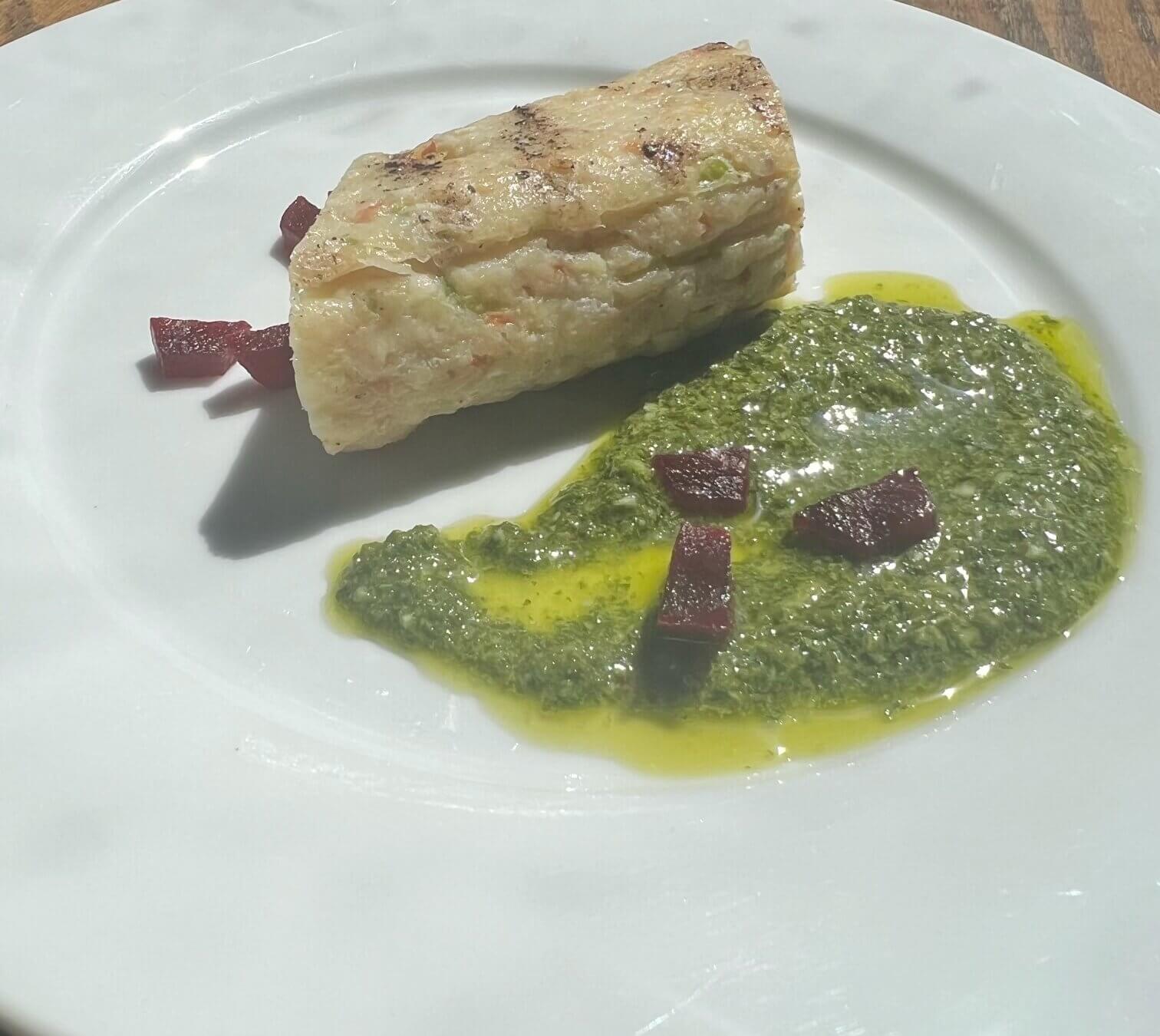
Ground white fish, grilled, in a bright herb sauce. Photo by @foodaism
Here’s a Jewish paradox: Passover celebrates freedom, so why force people to eat gefilte fish?
Some people like it, I understand. But for most dinner guests, especially those new to the sight of grayish pockmarked oblongs of mystery flesh sweating jellied fish globules, it’s at least confusing. If you are free to eat anything, why eat this?
The short answer is, of course, tradition. Ashkenazi gefilte fish, Sephardic fish cakes — which are a huge improvement in flavor and appearance — have been the taste of the holiday for centuries.
But Passover is also about change. The Passover liturgy tells us that “in every generation” we must tell the story anew, and so every generation has reconfigured it to suit the needs of the day.
The same goes for the food. The Torah’s original menu, in the Book of Exodus, Chapter 12, called upon each household to eat lamb, “roasted over the fire, with unleavened bread and with bitter herbs.” Nothing about gefilte fish, not even macaroons.
This year, in the run-up to Passover, the idea struck me: Why not treat ground fish like Persian koobideh, grilling the meat over a flame? In my case, I decided to forgo the actual skewers and traditional koobideh spices. I processed fish, vegetables and herbs in a Cuisinart, rolled it in parchment, grilled it, unwrapped it and served it with a bright spring green sauce— and it was delicious.
And so a new Passover tradition is born: grill-filte fish. It’s a recipe in process. You may want to add traditional Persian koobideh spices (garlic, sumac, turmeric) or lean into North Africa (garlic, chile, cilantro, sumac, cumin, turmeric). The whole idea is to make it your own, like Passover itself.
“Grill-filte” Fish
Grilled Fish Kebab with Spring Green Sauce
1½ pounds white fish filets, cubed (I use sustainable wild cod and local rockfish)
1 egg
½ carrot, chopped
½ stick celery, chopped
½ leek, white part only, chopped
1 tablespoon chopped fresh parsley
1 teaspoon salt
½ teaspoon pepper
1 teaspoon fresh lemon juice
2 teaspoons matzo meal
Add all ingredients to the bowl of a food processor. Pulse, scraping down often, until the mixture is well blended but still a little coarse. Cover bowl and refrigerate for at least two hours.
Preheat your grill. Cut two large sheets of baking parchment. Rub or spray with olive oil. Remove mixture from the refrigerator and lay some mixture along one edge of each parchment. Gently and firmly roll up into a cylinder. Each should be about 2-3 inches in diameter.
Place parchment rolls on the grill and cook over medium-low heat until they are just springy to the touch. Turn them midway through cooking. You can use a meat thermometer to test for doneness. It should register 140 degrees. They will cook in about 20-30 minutes.
Remove from the grill. Let them rest for a few minutes. Gently unroll. Cut a slice and taste to test for doneness. You can always place them back on the grill for a few minutes more.
Cut logs into 4-inch cylinders. Serve each one on a plate with some green sauce.
Passover Green Sauce
2 cups fresh curly or Italian parsley
½ teaspoon salt
½ teaspoon pepper
½ cup extra virgin olive oil
½ lemon, juiced
1 clove garlic
½ – 1 teaspoon prepared horseradish (optional)
Blend all ingredients together in a blender or food processor until you have a bright green puree.
A message from our CEO & publisher Rachel Fishman Feddersen
I hope you appreciated this article. Before you go, I’d like to ask you to please support the Forward’s award-winning, nonprofit journalism during this critical time.
We’ve set a goal to raise $260,000 by December 31. That’s an ambitious goal, but one that will give us the resources we need to invest in the high quality news, opinion, analysis and cultural coverage that isn’t available anywhere else.
If you feel inspired to make an impact, now is the time to give something back. Join us as a member at your most generous level.
— Rachel Fishman Feddersen, Publisher and CEO